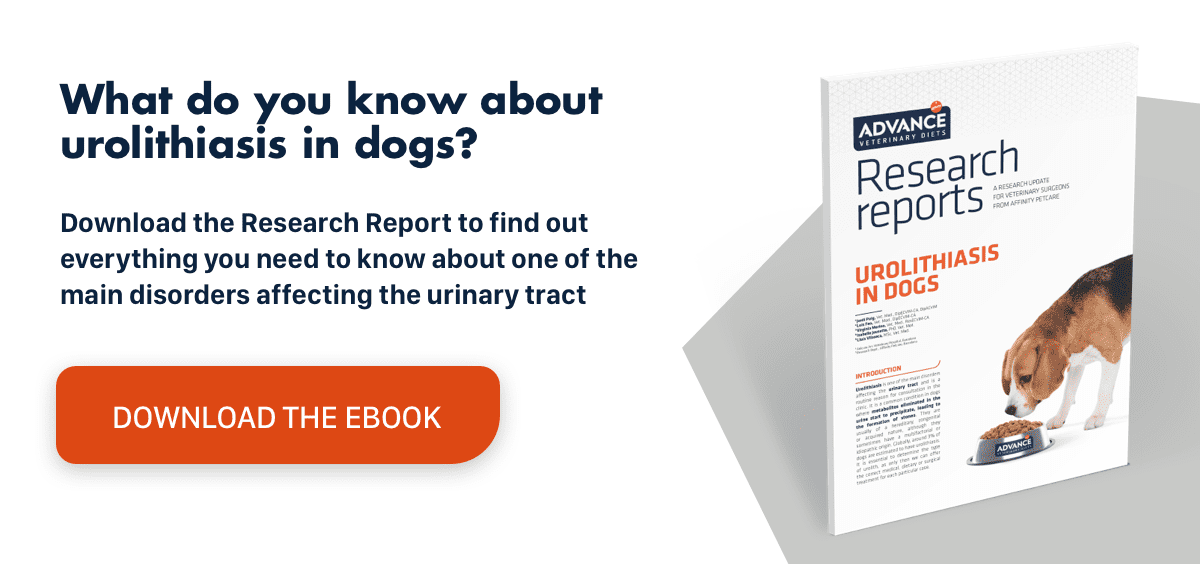Urine infections in dogs. Cost–effectiveness of bacterial cultures
Urine infections in dogs
They affect about 14% of dogs at least once in their lifetime. However, it is estimated that approximately 80% of infections remain subclinical.
Signs of urine infections in dogs
Some of the most characteristic signs of cystitis are:
- Increased frequency of urination, but less volume.
- Haematuria or blood in the urine.
- Painful urination, which can result in difficulty urinating, whining and whimpering.
- Incontinence.
- Sometimes dogs will urinate in unusual places.
If the cystitis becomes chronic or courses with other clinical signs, associated systemic diseases such as urinary stones, carcinoma, diabetes mellitus or Cushing’s syndrome should be suspected.
Treatment of cystitis in dogs
Besides administering an appropriate antibiotic and anti-inflammatories to control pain, proper hydration and nutrition of the patient are also important. Frequent, abundant urine at the correct pH will help clean out the urethra, hampering the infection’s advance to the upper urinary tract.
Foods especially formulated to care for the urinary tract will facilitate recovery, particularly if the cystitis is associated with the presence of struvite crystals. Find out about the characteristics of the Advance formula for urinary care
If the cystitis is associated with kidney disease or urolithiasis caused by calcium oxalate, cystine or uric acid crystals, then the Advance renal diet is the right choice for patients.
Diagnosis of urinary infections
Urinalyses are used to diagnose urine infections in dogs:
- Microscopic examination of urine sediment to detect the presence of white blood cells and bacteria. A Gram stain may be performed to facilitate the exam. However, urine dilution plays an important role in the quality of these samples, so many positives may go undetected.
- Test strips can be used to detect for protein residues and occult blood.
- Urine culture to determine the infectious agent.
Part of the diagnosis may also involve imaging tests. X-rays and ultrasound can detect the presence of masses and stones, if the cystitis is not of an infectious origin.
The sample should preferably be obtained by cystocentesis or catheterisation to avoid contamination.
Are bacterial cultures cost-effective in the detection of urine infections?
To assess the diagnostic value of urine cultures, the results of 1,264 cultures, taken from the University of California–Davis database, with a urine specific gravity of less than or equal to 1.013 were analysed and compared with the results obtained from the routine sediment examination.
Microscopic sediment analysis showed a diagnostic sensitivity of 58.5% and a specificity of 98.3%. The test had a diagnostic accuracy of 94.9%. With these results, the authors indicated that urine cultures have a low cost–effectiveness ratio, so they are not justified in all cases.
Nevertheless, approximately 40% of cases involve uncommon infectious agents. Urine cultures are especially relevant in chronic cystitis, since the identification of the pathogen, accompanied by an antibiogram, will mean the patient can be prescribed the most suitable antibiotic.

